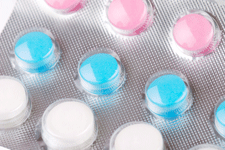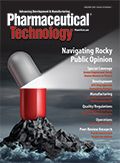On Trend in Pharma Packaging
Regulatory mandates, niche diseases, and patient-centric solutions have all impacted pharma packaging over the years and are expected to help shape the future of the sector.
Editor’s Note: This article was published in Pharmaceutical Technology Europe’s January 2020 print issue.
soleg- Stock.adobe.com

According to market research (1), the pharmaceutical packaging market is expected to grow at a compound annual rate of 8.3% during the period 2019–2025. Drivers for this growth in the pharmaceutical packaging market include rising demand from emerging economies, increasing efforts to improve life-expectancy, and more disposable income, among others.
In a report released by Pharmapack-the dedicated pharma packaging and drug delivery event-several trends, such as regulatory mandates, targeting niche disease areas, and patient-centricity, were highlighted as being important for the future of pharmaceutical packaging (2). This article explores the significant trends that have shaped the pharmaceutical packaging market over the past decade and those that have the potential to shape the future of the sector in more depth.
Uptake of serialization
Implementation of new regulations across global markets to combat counterfeiting has been touted as a major trend impacting pharmaceutical packaging over the course of the past few years. “The pharmaceutical packaging industry has seen an increased uptake of track-and-trace systems to prevent counterfeit products reaching patients,” says Marcelo Cruz, head of marketing and business development, Tjoapack. “This is partly due to the implementation of new regulations globally.”
In Europe, companies were required to comply with the European Union Falsified Medicine Directive (EU FMD) from February 2019. “The EU FMD requires all products to feature unique identifiers and anti-tampering devices to allow items to be verifiable at the point of dispense,” confirms Cruz. Similarly, companies in the United States have been required to comply with the US Drug Supply Chain Security Act (DSCSA)-a regulation that was implemented in 2014-which necessitates the inclusion of lot number, expiry date, and standardized numerical identifier on each drug product pack.
“These track-and-trace processes are now an integral part of the pharmaceutical supply chain and can significantly improve patient safety,” adds Cruz. “Likewise, the data these processes generate mean they can also help to streamline operations and logistics, increase visibility of the supply chain, and allow partners to more accurately forecast orders.”
Although these regulations coming into force have impacted the industry significantly, opportunities have also presented themselves for specialist companies in the fields of serialization and aggregation. “Many contract packaging organizations (CPOs) already had specialist knowledge of track-and-trace systems and the process of implementation. As such, these CPOs were able to offer this expertise to sponsor firms looking to outsource packaging requirements due to concerns around compliance,” notes Cruz. “This has afforded these CPOs a competitive advantage and made them a reliable outsourcing partner for their customers.”
Improved quality and focusing on the patient
For Dietmar Siemssen, CEO of Gerresheimer, a key trend impacting the pharmaceutical packaging industry has been the increasing demands for improved quality. “A key factor for the pharmaceutical industry, in terms of packaging, is to prevent any potential risk to patients’ health,” says Siemssen. “Therefore, the demand for the perfect packaging that guarantees the integrity of the drug has risen too. Pharma companies are moving increasingly towards zero-defect production and primary packaging providers are doing the same.”
Material selection can also play a part in terms of quality, according to Anil Kumar Busimi, senior global product manager for Schott iQ Platform, Schott. “Borosilicate glass has been the first choice for parenteral packaging for drug manufacturers since its development in 1911 due to its excellent barrier properties and regulatory ease,” he reveals. “Nonetheless, there is also another material, which is gaining interest, namely polymers (such as cyclic olefin copolymer). The physical stability as well as the diverse design options make it an attractive alternative for some drugs.”
Additionally, newer materials and packaging designs offer design flexibility so that demands of the drug products, filling processes, and route of administration can be easily met. This aspect is gaining importance for pharmaceutical companies as the healthcare setting is shifting away from the hospital and more towards home where the patient can administer treatment themselves. “As more and more treatments for chronic diseases are becoming available, we are seeing a strong trend towards self-administration and consequently a spike in device development,” states Busimi. “The overarching goal is to make self-administration of injectable drugs (including biologics) easy and safe, while also improving patient adherence.”
Compliance with a medication regimen and patient convenience have been important considerations for pharmaceutical packaging companies, adds Siemssen. “In the future, there will be an evolution of intelligent and connected drug delivery devices and pharmaceutical primary packaging,” he notes. “These changes may be seen by the industry in the forms of complete solutions, platforms, or modular systems.”
Concurring with Siemssen, Busimi highlights the attention that has been given to wearable devices and injector technology by the industry, particularly when used to deliver high-volume and high-viscous drugs in the home setting. “Large volume, on-body injectors need novel primary packaging solutions, which can keep the drugs stable, offer required container closure integrity, fit seamlessly with the device, and are easy to integrate in fill-and-finish operations,” he stresses.
Moving away from the blockbuster and the rise of biologics
An industry trend witnessed by Busimi over recent years has been the shift from blockbuster drugs to personalized medicine. “Targeted therapies and other novel drugs are continuing to dominate the drug development pipeline, and the pharmaceutical packaging industry has started to explore new ways to package and store products in response,” remarks Cruz in agreement with Busimi’s observation.
“The introduction of more biologics, such as monoclonal antibodies, cell and gene therapies, antibody–drug conjugates, among others, has had a direct effect on pharma packaging,” continues Busimi. “Such drugs are typically produced in small batches, pushing manufacturers toward leaner manufacturing operations. Subsequently, the demand for ready-to-use primary packaging components and flexible filling technologies is growing.”
Furthermore, the sensitive nature of biologics means that they often require precise packaging material or specialist, temperature-controlled packaging, notes Cruz. “Packaging organizations need to understand the intricacy of packaging these products to ensure they can continue to service their customers,” he says. “It’s also important for companies to ensure they are mitigating the risks associated with improper packaging or storage. This added layer of complexity has driven an increase in demand for the services of specialist CPOs with this expertise in place.”
Looking beyond the current trends
“When looking beyond the current trends, which will affect the pharma packaging industry for years to come, we can say that the industry is developing a strong purpose driven mindset,” states Busimi. “As health and wellbeing are highly precious to people, this mindset will be reflected in many future trends.”
By way of example, Busimi continues to explain that it is pharma packaging companies’ purpose to contribute to both patients and the pharma industry, which will lead to increasing collaborative efforts to foster innovation. “The use of resource-efficient innovation models such as externally sourcing or cooperatively developing products in partnerships becomes fundamentally important in rapidly changing markets,” he says. “The paradigm of open innovation and integrating the development of primary packaging and delivery devices early in the development will increase.”
For Siemssen, patient-centricity will continue to receive heightened interest and consideration in the future. “As more and more people around the world gain access to healthcare systems and healthcare costs continue to rise, focus on the patient and controlling costs will be of great import,” he notes. “Therefore, within the increasingly modern digital world, drug compliance and convenience for the user are key for the future with pharmaceutical packaging and delivery systems playing a crucial role in that health ecosystem.”
Adding to the discussion on patient-centric trends, Busimi highlights that digitalization in pharma and general healthcare will be a contributing factor. “The use of wearable devices for data collection and diagnosis, use of smart containers, smart drug delivery devices, and use of big data for optimizing the primary packaging as well as fillâandâfinish operations will significantly transform the drug development to tracking patient outcomes,” he says. “This is further seen as a key enabler to reduce costs in the healthcare systems.”
Postponement packaging is a trend that will gain prominence in the future, according to Cruz. By implementing a more flexible packaging process, firms will be able to react more quickly to market demands and can potentially avoid costs that could be associated with recalls or variations in supply requirements, he explains.
“Another trend that is likely to impact pharma packaging over the course of the coming decade is that of full aggregation, which is effectively the next step beyond serialization,” states Cruz. “Aggregation essentially eliminates the need for a wholesaler to open a case and scan individual units manually, creating significant process efficiencies and lowering resource requirements, as well as ultimately speeding up a product’s passage through the supply chain.”
References
1. Grand View Research, “Pharmaceutical Packaging Market Size, Share & Trends Analysis Report by Material (Plastics & Polymers, Paper & Paperboard), by Product (Primary, Secondary), by End Use, and Segment Forecasts, 2019–2025,” grandviewresearch.com, Market Report (June 2019).
2. Pharmapack Europe, “The Golden Age of Innovation is Beginning,” pharmapackeurope.com, Report (September 2019).
Article Details
Pharmaceutical Technology Europe
Vol. 32, No. 1
January 2020
Pages: 9–12
Citation
When referring to this article, please cite it as F. Thomas, “On Trend in Pharma Packaging,” Pharmaceutical Technology Europe 32 (1) 2020.

Pharmaceutical Tariffs Are Imminent: How Industry is Bracing for Impact
April 16th 2025On April 14, 2025, the Trump Administration launched a national security-driven investigation into pharmaceuticals, a move that will likely result in tariffs being placed on pharmaceutical drugs, ingredients, and other components that are imported from outside of the United States.